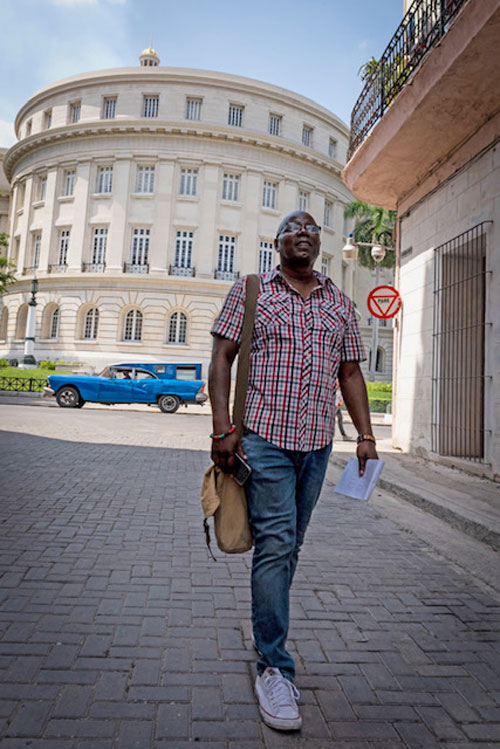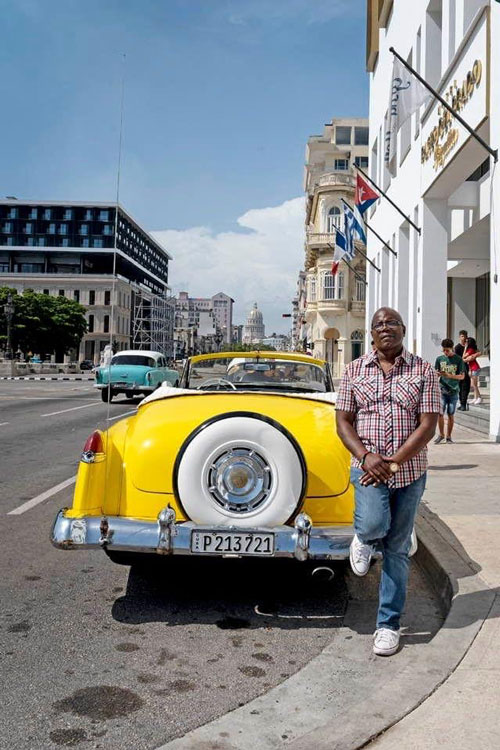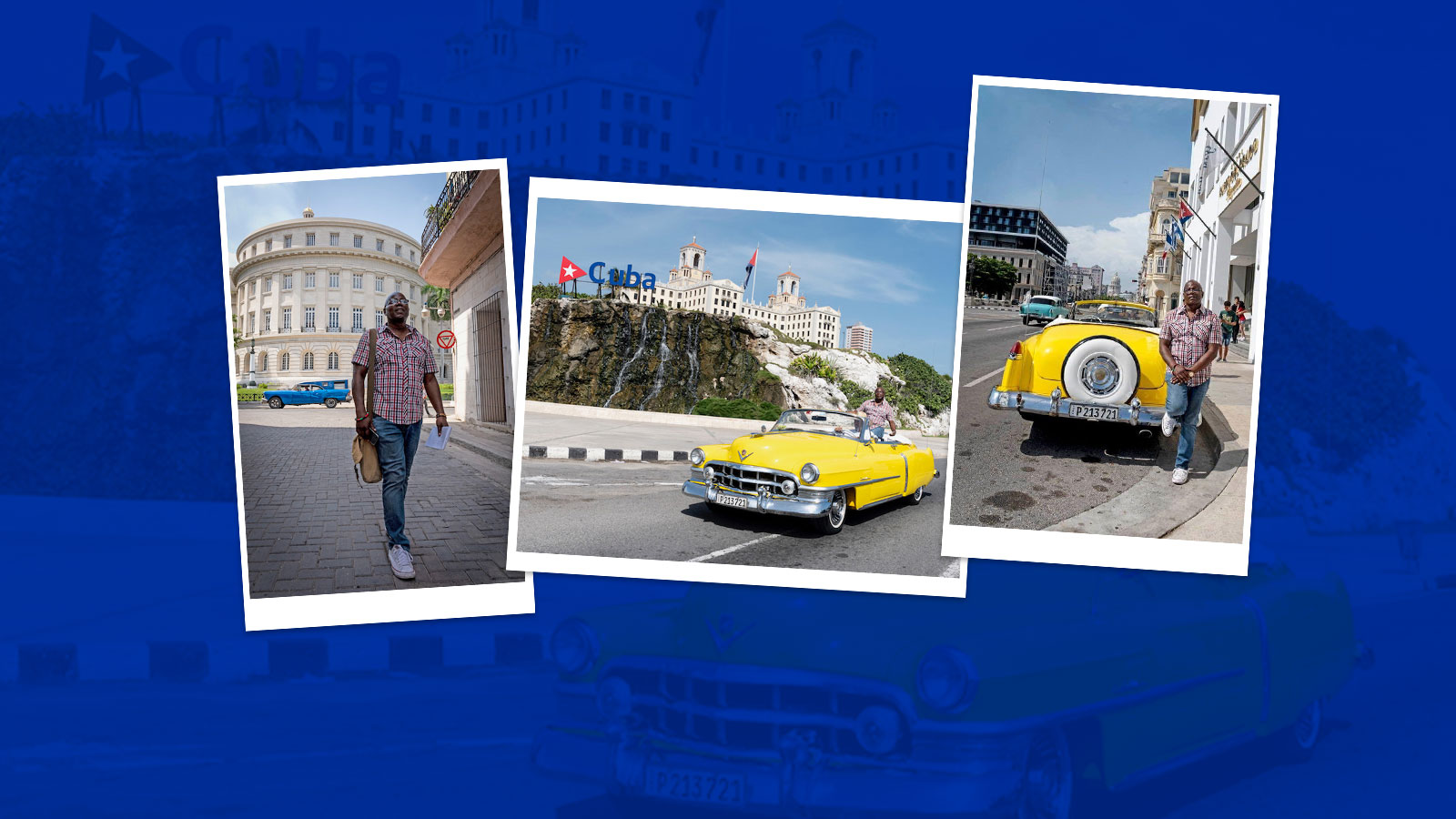By Bashir Muhammad Ptah Akinyele —
***
“From its earliest days, the Cuban Revolution has also been a source of inspiration to all freedom-loving people. We admire the sacrifices of the Cuban people in maintaining their independence and sovereignty in the face of the vicious imperialist-orchestrated campaign to destroy the impressive gain made in the Cuban Revolution. Long live the Cuban Revolution. Long live comrade Fidel Castro.” — Nelson Mandele
***
My Cuban educational tour during the summer 2023 was incredible. Big shout out to Letty’s Cuba Travel (lettycuba.com)! I learned so much about Cuban people, Cuban history, Cuban culture, and the Cuban revolution. But most importantly, my world traveling experiences are educating me on the vastness of the planet earth. Since 2018, I have visited Europe, Africa, and countries in the Caribbean. I now know the world is bigger than Newark, NJ and the US. And that Africa’s cultural traditions are firmly rooted and reflected everywhere in the world.
Unfortunately, America and western civilization are trying to define the role Black culture has played in shaping global human societies. And when you do not know the significance of African history and culture, you allow the world-views of monopoly capitalism, Europeanization, and Arabization to define your perspectives in the world. Knowing these things, I was able to put aside any biases that were taught to me in the US from childhood to fully understand the history of Cuba and its struggle to be an independent nation.
You can travel to Cuba from America, but only under certain restrictions. I went to Cuba on an educational tour of Cuba.
***

Bashir Muhammad Ptah Akinyele – Cuba 2023
Day 1 in Cuba was amazing! Right away, I did not feel the racial pressures from white supremacy and racism. Sometimes you must get away from the western world to clear your conscious mind from the daily grind of racial and class oppression.
In Cuba, the people are warm and friendly. But the first thing I notice in Havana is this: masses of Black people. The majority of Cuba’s population are Afro Latinos. I have seen many brothers and sisters that are just like Black people in the United States. And speaking of Black people, there are many Africans / African Americans participating in Cuba’s cultural and medical exchange programs.
After I flew into José Marti airport, my guide took me to various towns in Cuba that led up to the city of Havana. Brother Marti is considered Cuba’s national hero because of his role in the liberation of his country from Spain.
We toured the towns of Maria Nao and Vadadoo.
I stopped by the Cemetery of Colon. This cemetery is one of the largest cemeteries in Latin America.
But the tour highlighted Plaza De La Revolucion (Revolutionary Square). This large area of land is located in the city of Havana. Every year on May 1, the Cuban people celebrate Solidarity Day. Millions of people from all over the world flock to Revolutionary Square to pay for people’s unity.
***
Day 2 started my day with a classic car open convertible Cadillac ride through old and new Havana.

Bashir Muhammad Ptah Akinyele – Cuba 2023
My ride through the city was about learning its history. My Cuban education took me to an actual state run cigar factory.
There, I learned about the process it takes to make an authentic Cuban cigar. My tour guide taught me that it takes five special types of tobacco leaves. The wrapper is made from shaded tobacco. Inside the cigar is the filler. It is made from four types of leaves for strength, aroma, combustion, and binding.
Cigars originated in Cuba. The most authentic Cuban cigars have the Habanos label. If a cigar does not have a Habanos label, it is fake.
The cigar workers’ schedules are from Monday through Friday. They work 8 hours a day with weekends off. Cigar workers make 80 to 100 cigars a day. Each individual worker makes the cigar from beginning to the end. But before a Cuban cigar worker touches a cigar, they go to school to learn how to make authentic Habanos cigars. However, the state allows cigars workers to take five cigars a day for their own personal consumption. One worker gave me an authentic Habanos Cigar to smoke.
After my educational cigar tour guide taught me the makings of a Cuban cigar, we were able to spend some time talking about politics. He said to me that some of the Cuban leaders are locked in a struggle to complete the Cuban Revolution. I was able to fully understand and relate to everything the brother said to me. As an African American, my US country’s leaders are still locked in a struggle to practice true democracy, to fully embrace civil rights, provide reparations to repair the damages done to Black people from centuries of American slavery and segregation, and to respect Black self-determination. I told my guide that I am hopeful that one day our leaders will fulfill the desires of the people.
I left the cigar factory with a more realistic view of the Cuban Revolution and cigar manufacturing.
Speaking of politics, the next part of my Cuban educational tour took me to the massive Capital building. I was able to go into the various rooms and the assembly hall. My Cuban Capital tour guide was great. She also initiated a deep discussion on Cuban revolutionary politics. My guide was a little troubled about Cuba’s leaders. This very pro-Black Cuban Afro Latino sister said to me that Cuban’s revolutionary leaders are too communist and less nationalistic. I said to my guide that I am learning every day the realities of Pan Africanism, social justice, and revolutionary struggle. They sometimes are protracted struggles. She agreed with me.
Fidel Castro and Che Guevara led a revolutionary movement in Cuba in the 1950s. The war defeated the US backed dictatorship of Fulgencio Batista in 1959. Che Guevara left Cuba on a Cuban-sponsored internationalist mission in Africa to help free African Angola of European Portuguese racist and exploitative colonialism. On October 3, 1965, Fidel Castro established the Communist Party of Cuba.
Both of my cigar and capital tour guides were well educated and articulate people. However, during the year, they spend their time as teachers in Cuba’s school system.
I had a full day.
***
Day 3 was beach day. My educational tour took me to Varadero Beach. The water was crystal clear turquoise Blue. But before I went to the beach, my tour stopped at Bacunayagua. It is a lookout point viewing a panoramic scene of the Matanzas province. The distance from Havana to Varadero is two hours.
***
Day 4 was about Cuba’s revolutionary culture.
My educational tour took me to Cuba revolutionary museum and community projects. It was powerful. I learned so much about Cuba’s struggle for independence and against the US backed Batista dictatorship. Many aspects of the revolution were directed by the Afrikan Yoruba traditions. The Yoruba traditions originated from West Africa in what is now known as Nigeria. The cultural, linguistic, and spiritual Yoruba customs spread to the Americas and the entire world due to the 400 years of the European Trans Atlantic Slave Trade..
I also toured and participated in Cuba’s community projects. They are called Muraleando (Unity without Uniformity) and Callejon Dehamel (little stone)! Both community projects were inspired by Afrika and her spiritual and cultural traditions center on the Yoruba.
Then later on in the night, my tour took me to a musical performance about the creation of the Latin America Afro Muutto community.
***
Day 5 was about visiting Ernest Hemingway’s historic Cuban home, Plaza de Armas, and La Catedral.
Since Cuba’s government allows freedom of religion, all faiths are represented in the country, such Judaism, Christianity, and Al-Islam. But in Cuba, the Yoruba Afrikan spiritual tradition is openly displayed and practiced in the streets.
***

Bashir Muhammad Ptah Akinyele – Cuba 2023
In summation,
My trip to Cuba was awesome!!! I received a first hand education of Cuban heritage and her people through Letty’s Cuba Travel. It is the best way to experience Cuba (lettycuba.com).
I didn’t want to come back to the US. America. My country is filled with too much racism. class oppression, and too many Black and Brown people detached from our African heritage (white supremacy and institutional racism makes this a daily reality in the Black and Latino community). However, Afrikan culture is reflected everywhere in Cuba!!!!!!!
Black people are the majority in Cuba. I did not feel race at all. Didn’t hear the n-word or the b-word once!!! Although the people in Cuba struggle hard to live their lives, there is always the conscious spirit to work for the collective unity and be openly affectionate with one another in the community.
Crime and senseless community violence almost doesn’t exist in Cuba.
Although America is the most industrialized advanced country in the world, the contradictions are blatantly clear. First, race is the premier problem in the US. If you are white, or close to light, or close to white, you are looked at as being part of the privileged racial class. However, if you are Black, or dark, or far from white, you are looked at as the rejected racial class. In America, whiteness is extolled as superior. But blackness is looked as inferior. Therefore, every culture that comes to America is oriented into this racial program. This is why education in America must be centered on ethnocentrism. In the US, the inclusion of Black History into America’s school system is white washed. The White power structure does not want our history to educate the masses on Black people’s contributions to human society, because then all cultures will begin to see people of African descent as a respect people.
As a result of this madness, the US banks on racial and class divisions to keep us disunited. All in an effort to never solve the lingering issues of equality, poverty, and reparations for its people of African descent.
It is interesting that America has the best upgrades in its infrastructure in the world such as, government buildings, roads, buildings, waste management, sanitation, electricity, internet system, and schools. However, many people in America don’t care about a collective struggle to respect humanity. Many people in America are grossly individualistic. This individualistic consciousness has its roots in the worst of European culture. And it rears its ugly head everyday in the US to undermine the good things that take place in America.
In order to survive as a country, we must divorce America from the narrow traditions of western culture to form a better, more perfect union for all the cultures of humanity.
Hotep (An ancient African Kemetic / Egyptian Medu Neter word for peace)!
Bashir Muhammad Ptah Akinyele is a community activist and a member of ASCAC (the Association for the Study of Classical African Civilizations). He is also a history and Africana Studies (Black Studies ) teacher at Weequachic High School in Newark, NJ.















